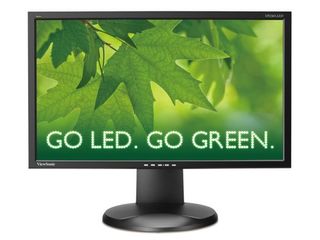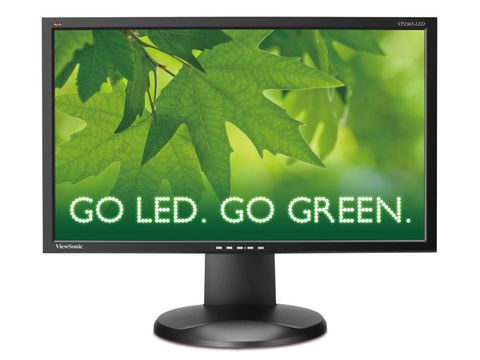Why you can trust TechRadar

The ultimate in current LCD technology would combine the best of IPS and PVA panel technology and throw in some LEDs and fully adjustable stand for good measure. Hold onto that thought for a moment.
Out of the box, if you didn't know what sort of panel the ViewSonic VP2365-LED packed, you'd face something of a conundrum. On the one hand, the colours are conspicuously rich and vivid. That suggests PVA. On the other, the palette isn't over saturated, which tends towards a diagnosis of IPS. Then again, the anti-glare coating is very smooth and free from sparkle. The blacks are rich, too. We're back to PVA again.
The VP2365-LED also puts in a strong showing in the Lagom suite of test images. Both black and white scales offer oodles of detail. The colour scales aren't exactly shabby, either, while the viewing angles do the usual IPS thing, which means they're wide enough to be a total non-issue.

Things get even more confusing as you dig a little deeper, calling on a range of go-to give aways in the quest for panel identity. When is comes to IPS screens you can almost always pick 'em, thanks to a little quirk known as IPS glow. It's basically a little unwanted light leakage that's visible when displaying very dark tones. Sweep your head across the screen and you can see the glow transition across the panel surface.
But not here. Or at least the IPS glow has been suppressed to the point of near invisibility. The same goes for those traditional PVA tell tales, inverse ghosting and input lag. Both are a by-product of image processing and in particular pixel overdive, a technology commonly used on PVA screens to improve pixel response. Neither rear their ugly mugs here.
Likewise, while there have been reports of the ViewSonic VP2365-LED suffering from edge or corner bleed from the backlight, our sample simply didn't suffer them. All of this will have you wondering what if anything could possibly spoil the party.

Well, that 250cd/m2 backlight rating does indeed translate into less than retina searing brightness. This isn't an issue in normal usage, since few people are comfortable for long periods beyond 200cd/m2 in normal lighting conditions. But it does make for a slightly less flexible monitor.
The only other hitches involve the pixel response and refresh rate. Both, frankly, are relative. In absolute terms, the ViewSonic VP2365-LED is more than quick enough for games, movies, you name it. But it's not as lightning-quick as an overdriven TN panel.
The same goes for the 60Hz refresh rates. It's pretty much the industry standard, and if you'd never tried anything else, you wouldn't give it a second thought.
Problem is, we have seen something else, namely screens built for active shutter 3D tech that support refresh rates of 120Hz. They're so slick and smooth that even just for wiggling windows on the desktop, once you've seen 120Hz, it's hard to go back.
Technology and cars. Increasingly the twain shall meet. Which is handy, because Jeremy (Twitter) is addicted to both. Long-time tech journalist, former editor of iCar magazine and incumbent car guru for T3 magazine, Jeremy reckons in-car technology is about to go thermonuclear. No, not exploding cars. That would be silly. And dangerous. But rather an explosive period of unprecedented innovation. Enjoy the ride.

Inside the company making 35-year-old Game Boys look and work like new

AMD teams up with Arm to unveil AI chip family that does preprocessing, inference and postprocessing on one silicon — but you will have to wait more than 12 months to get actual products

The US takes another big step towards banning TikTok – here's what you need to know
